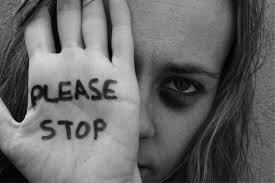Domestic violence is also known as intimate partner violence, domestic abuse and spousal abuse in an effort to maintain or gain control, and is more common in relationships than you may think. 1 in 4 women will be the victim of partner abuse at some point in her life, and unfortunately in some situations, that may involve her children.
Creating a safe home environment is detrimental to a child’s mental and emotional development. In homes where violence occurs, the children that may overhear, experience, see or sense violent interactions often become anxious and worried. Their behavior changes to always being on alert wondering when the next domestic disturbance may happen in their home; a place that no longer feels safe.

The severity and frequency of domestic abuse can include sexual or physical violence like psychological, emotional and financial abuse. All these domestic acts create negative effects on children who may show signs of abuse by acting out, being starved for attention or completely withdrawing.
It is often very hard to leave a domestic violence situation even if you are a single person, and adding in the element of children may make it even harder to leave. If you are staying in home with violence, then creating an escape route and a plan can help you to leave. Depending on where you are located, there are places and services available to help you and your family seek safe refuge.
Making sure a domestic violence shelter is equipped to handle your whole family is a crucial part of your planning. There are resources available to help find the best possible fit for your family. The staff and caring individuals at these shelters understand the severity of violent home situations, and the lasting negative effects on children and will be able to help you find additional resources such as counselors and therapists who can aid families in talking through the abuse.
If you or someone you know is experiencing abuse, please try to leave the situation. Use the tools and state/county resources available to you to help you break the cycle of violence.








